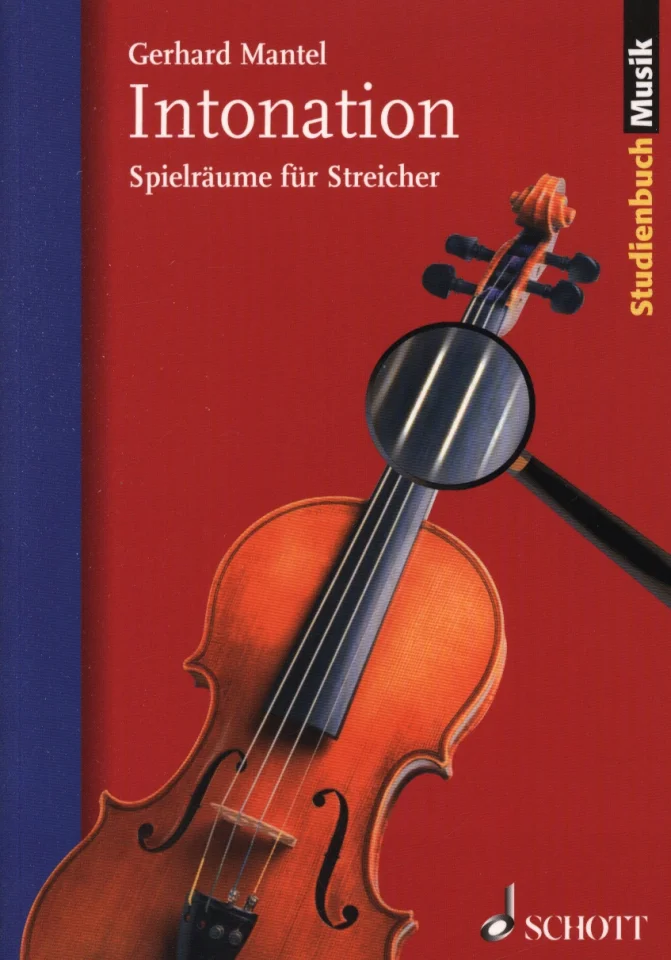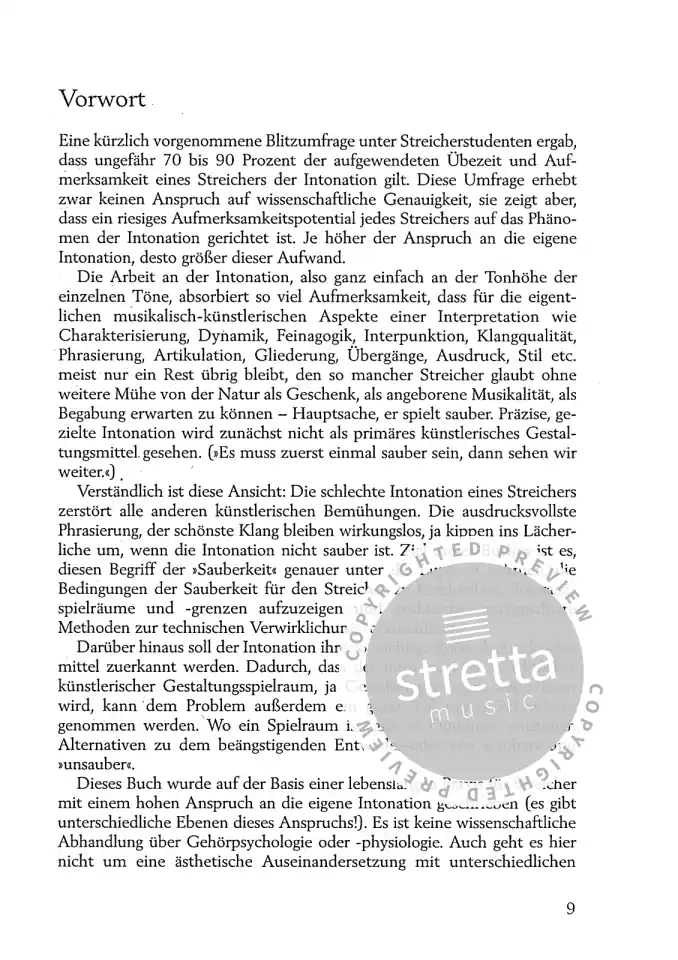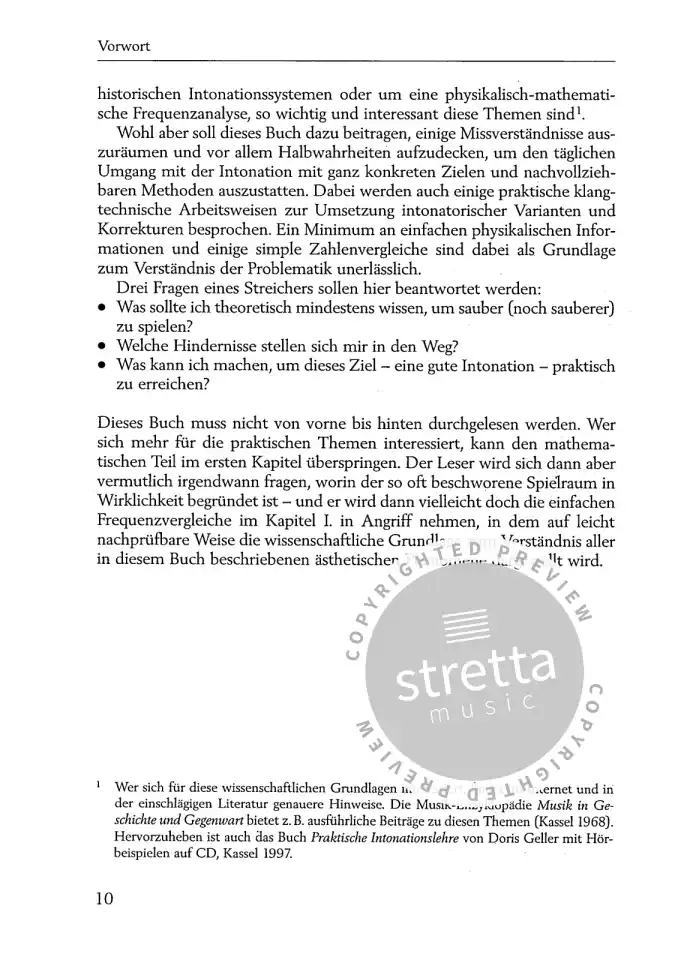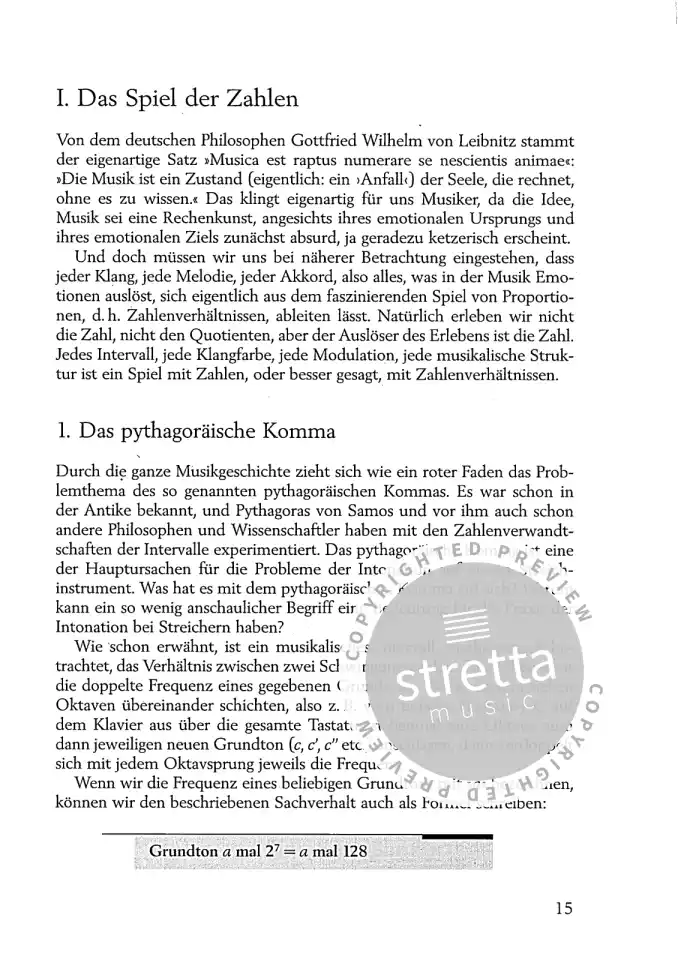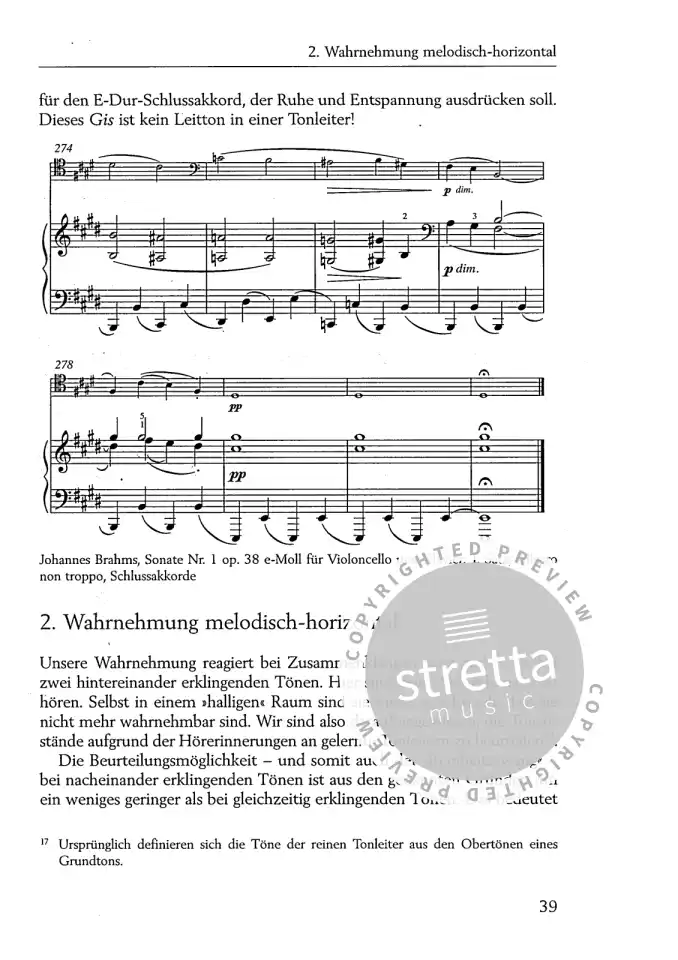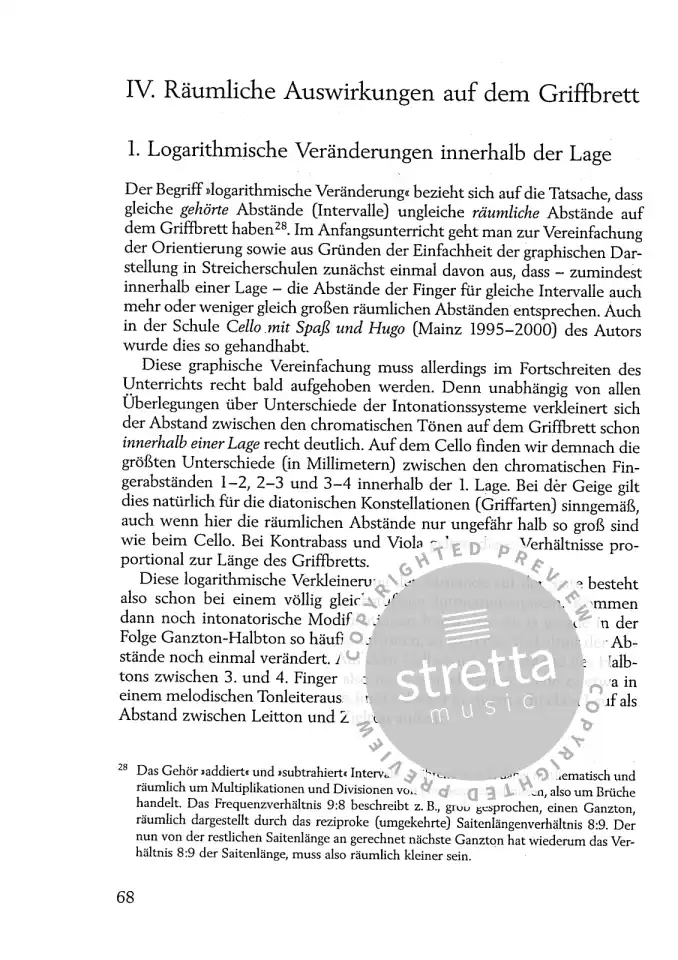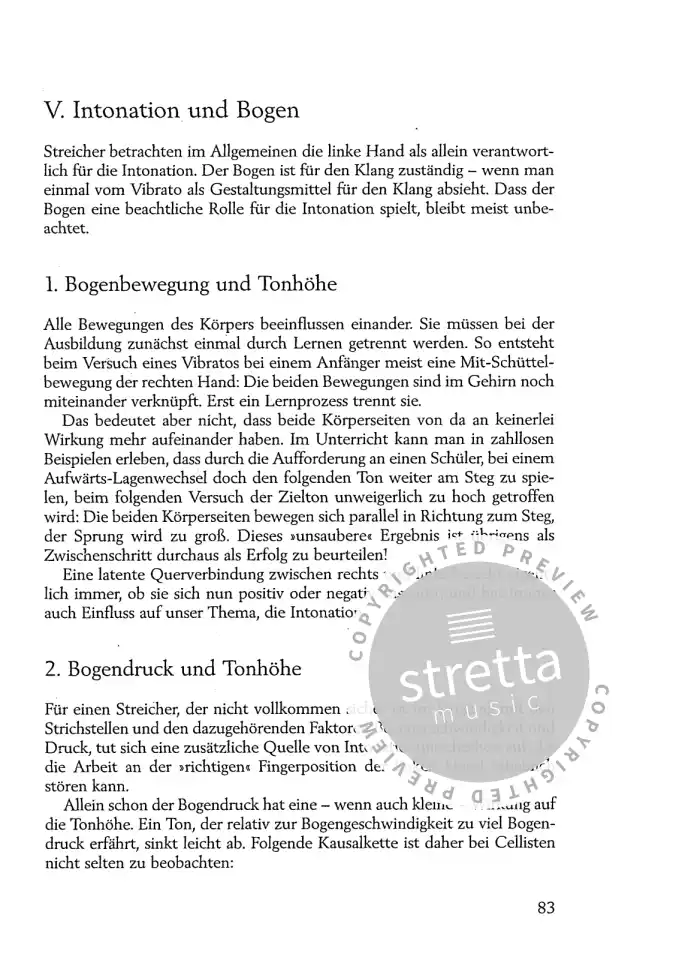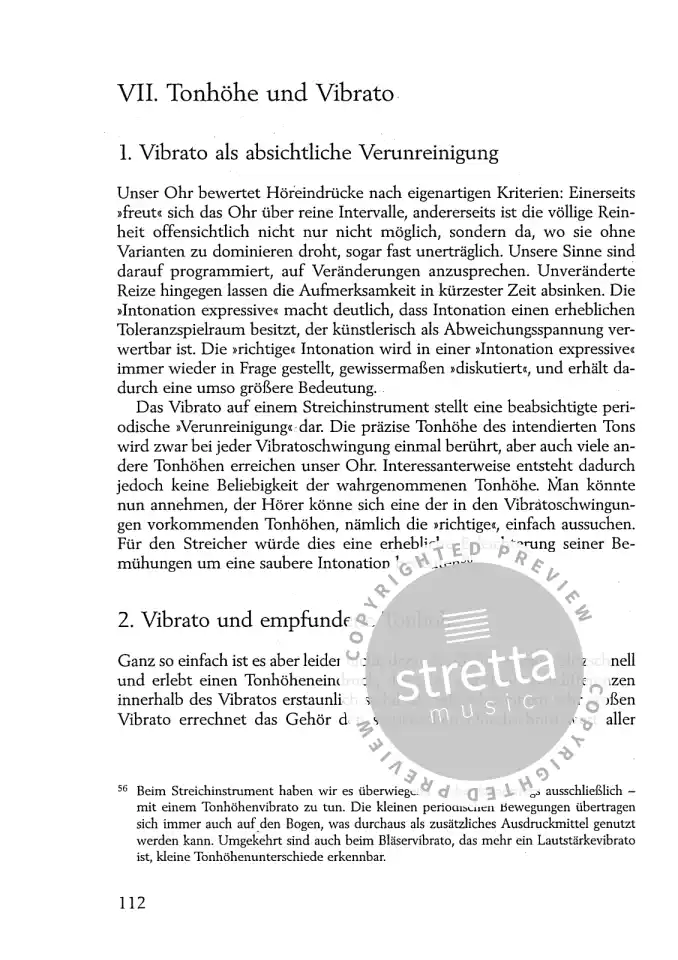Content
I. Das Spiel der Zahlen
- Das pythagoräische Komma
- Das syntonische Komma
- Konsequenzen für die einzelnen Intervalle
- Reine Intervalle fast ohne Intonationsspielraum: Primen, Oktaven, Quinten und Quarten
- Terz
- Sexte
- Große Sekunde (Ganzton)
- Kleine Septime
- Große Septime
- Der Halbton
- Der Tritonus
- Frequenz und schwingende Saitenlänge
- Intervallbestimmung in Cents
- Schwebungen
- Differenztöne
- Die gleichschwebende oder gleichstufige Intonation
II. Wahrnehmung von Tonhöhe und Intervall
- Wahrnehmung harmonisch-vertikal
- Wahrnehmung melodisch-horizontal
- Wechsel zwischen den verschiedenen Intonationssystemen
- Wahrnehmung und Vorstellung
- Intonationswahrnehmung und Tempo
- Intonationswahrnehmung und Lautstärke
- Intonationswahrnehmung und Klangfarbe
- Intonationswahrnehmung und Rhythmus
- Zurechthören
- Wahrnehmung fremder Intonationssysteme
III. Intonation als Ausdruck
- "Intonation expressive" (Casals) - Möglichkeiten und Grenzen
- Expressive Intonation und Sicherheit
- Portamento
- "Lieber zu hoch als falsch"
IV. Räumliche Auswirkungen auf dem Griffbrett
- Logarithmische Veränderungen innerhalb der Lage
- Praktische Intonationsmuster
- Saubere Töne oder saubere Intervalle?
- Intervallschritte aufeinander abstimmen
- Intonationsvergleich verschiedener Lagen
- Intonationssicherung mit Hilfe von Flageolett-Tönen
- Intonation von Akkorden
- Intonation und Übetempo
V. Intonation und Bogen
- Bogenbewegung und Tonhöhe
- Bogendruck und Tonhöhe
- Intonation und Mut
- Doppelgriffe und Bogendruck
VI. Intonation und Bewegung
- Sensibilität und Körperbewegung
- Intonation und Fingerbewegung
- Umsetzen der Finger bei Doppelgriffen
- Intonation und Lagenwechsel
- Tonhöhenvorstellung
- Intonation und räumlicher Abstand
- Motorisches Gedächtnis
- Vorstellungshilfen zum Lagenwechsel
- Intonation und "Timing" des Lagenwechsels
- Korrekturhilfen
- Intonation von Spielfiguren
- Intonation und Sprache
VII. Tonhöhe und Vibrato
- Vibrato als absichtliche Verunreinigung
- Vibrato und empfundene Tonhöhe
- Vibrato als persönliches "Markenzeichen"
VIII. Stimmen
IX. Psychologische Aspekte von Intonation
- Intonation und Selbstbewusstsein
- Mut zur Unsauberkeit
- Fehlertoleranz
- Intonation und Aufmerksamkeit
- Intonation und Anstrengung
- Intonatorische Definitionshilfen
- Alle Sinne einschalten
- Das Auge
- Der Tastsinn
- Der kinästhetische Sinn
- Geruchssinn und Geschmackssinn
X. Gewohnheiten
- Kulturelle Gewohnheiten
- Individuell erworbene Gewohnheiten
- Intonationspräferenzen
- Schlechte Gewohnheiten in gute verwandeln
- Intonation und absolutes Gehör
XI. Intonation im Zusammenspiel
- Zusammenspiel mit Streichern
- Zusammenspiel mit Klavier
- Zusammenspiel mit Bläsern
- Zusammenspiel mit Cembalo und Orgel
- Zusammenspiel im Orchester
- Intonationsband des Orchesterklangs
- Individuelle Intonation des Streichers im Orchester
XII. Intonation im Unterricht
- Unterscheidungsfähigkeit von Tonhöhen
- Fehlerakzeptanz als Bedingung für gute Intonation
- Intonation und Disziplin
- Intonation und Information statt einer Zusammenfassung
Schlusswort
Literaturverzeichnis
Sachregister
